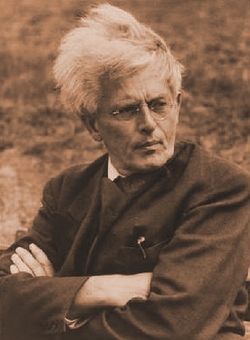Fluoromatics Software - Tools that shape the face of photosynthesis research
Main menu:
Kautsky Effect
Science&Tech > Fluorescence Basics
The Kautsky effect (known as fluorescence transient, OJIP curve, fluorescence induction or fluorescence decay) is a phenomenon consisting on a typical variation of fluorescence produced by plants and other chlorophyll containing material when exposed to light.
When dark-adapted photosynthesising cells are illuminated with continuous light, the induced chlorophyll fluorescence displays characteristic changes in intensity accompanying the induction of photosynthetic activity.
Each quantum of light absorbed by a chlorophyll molecule rises an electron from the ground state to an excited state. Upon de-excitation from a chlorophyll a molecule from excited state 1 to ground state, a small proportion (3-5% in vivo) of the excitation energy is dissipated as red fluorescence. The indicator function of chlorophyll fluorescence arises from the fact that fluorescence emission is complementary to alternative pathways of de-excitation which are primarily photochemistry and heat dissipation. Generally, fluorescence yield is highest when photochemistry and heat dissipation are lowest. Therefore, changes in the fluorescence yield reflect changes in photochemical efficiency and heat dissipation.
The slow decrease of the fluorescence intensity after the first second of illumination is termed non-photochemical quenching. Non-photochemical quenching is most likely due to a protection mechanism the plant has to avoid the adverse effect of an excess of light. Several processes cause non-photochemical quenching, e.g. photoinhibition.
During a typical Kaustky curve, a chlorophyll containing sample is illuminated with a constant light source. The emitted fluorescence intensity increases with time and reach a maximum in the 300-500 ms range. After the first second, the intensity falls again and finally reaches a steady-state level. The initial rise of the fluorescence intensity is attributed to the progressive saturation of the reaction centres in the photosynthesis pathway. Therefore the quenching of the fluorescence by the photosynthesis decreases with the time of illumination, accompanied with a corresponding increase in the fluorescence intensity. The quenching by the photosynthesis pathway is called ‘photochemical quenching’.


The Kaustky effect was first described in 1931 by Dr. Hans W. Kautsky (1891-1966), a docent (assistant professor) at the Chemisches Institut der Universität in Heidelberg, Germany. Kautsky studied the emmission of variable fluorescence in plants while he was investigating the action and properties of active singlet oxygen in photosensitisation processes.
Since youth years, Kautsky was interested in chemical problems. He studied chemistry from 1911 - 1917 at the Charlottenburg technical school. In 1922, he attained a doctorate from the University of Prague, and becomes assistant professor for inorganic chemistry at the University of Heilderberg. From spring 1936 to 1945 he worked at the University of Leipzig as professor of inorganic structural chemistry.
Prof. Kautsky and his collaborator A. Hirsch observed an increase of fluorescence intensity when dark-adapted photosynthetically active samplea were illuminated. They published their observations in a one single page article titled ‘New experiments on carbon dioxide assimilation’ in the journal "Naturwissenschaften". The time course of Chl fluorescence, observed with the authors’ eyes, was qualitatively correlated with the time course of CO2 assimilation, published earlier by Otto Warburg in 1920. Kautsky first proposed the singlet oxygen as a quencher of fluorescence during CO2 assimilation. His work was long ignored and it was only in 1964 that his research work on the role of singlet oxygen in photosynthesis was recognized. The results of Kaustly were the base for very important discoveries in photosynthesis research.
References
- Kautsky, H., Hirsch, A. (1931), Neue Versuche zur Kohlensäureassimilation, Naturwissenschaften, 19:964-964.
- Govindjee (1995), Sixty-three years since Kautsky chlorophyll a fluorescence, Aust. J. Plant Physiol. 22, 131-160.